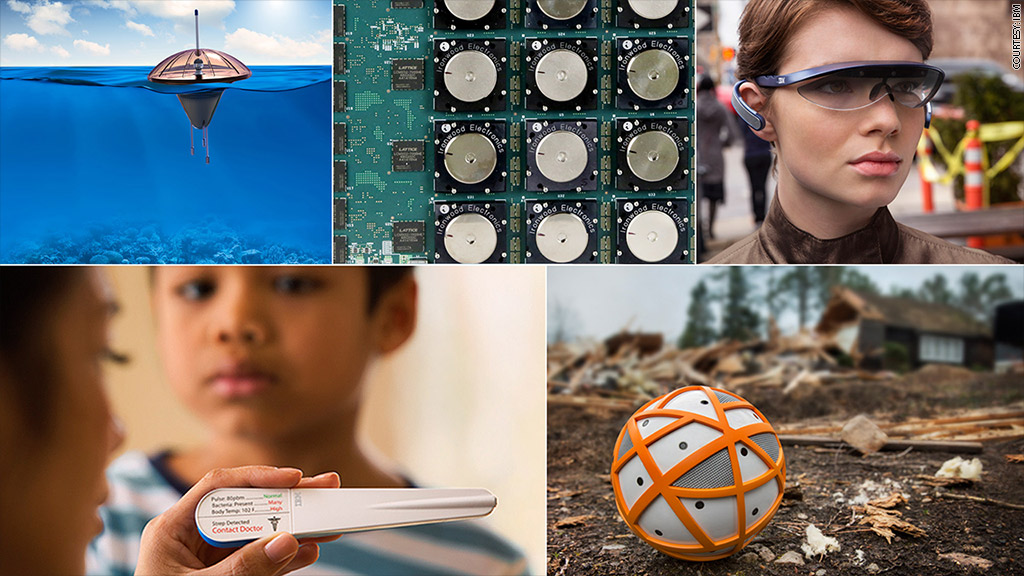
IBM has built a computer chip that functions like a brain.
It can sense, taste, feel, smell, hear, and understand its surroundings.
One day, IBM (IBM) says the chips might be used to build a thermometer that can "smell" what disease you have and let you know if you need to see the doctor. Or they could be built into a spherical robot that finds people on search and rescue missions. Or they could be included in glasses for blind people -- the glasses might be able to "see" what's in front and speak directions to the person wearing them.
That's up to developers. For IBM's brain-like chips to see the light of day, software and hardware engineers will have to write programs for the chips and build them into devices.
None of those things are possible with today's computer chips. The processors you have in your laptop or smartphone are really good at making lightning-fast computations, but they're really bad at making sense of the world around them. That's because most chips today are capable of making just one calculation at a time.
Our brains don't work like that. They have multiple "cores" making decisions and inferences at the same time. One part of the brain might see blue, another might hear waves crashing, another might smell sea salt, and your brain simultaneously merges those senses to determine that you're at the beach.
Related: IBM to start selling Apple iPhones and iPads
That's kind of how IBM's new chip works.
Each chip has 4,096 cores, 1 million "neurons" and 256 million "synapses." That means each core functions at about the scale of a worm brain, and each chip works at about the same level as a bee brain. Put lots of these chips together, and things get really interesting.
Amazingly, the chips are so low-powered, they can easily run on a smartphone battery. But they pack a punch: They're capable of 46 billion synaptic operations per second per watt. That's supercomputer-like.
"It's a supercomputer the size of postage stamp, the weight of a feather and runs on the power of a hearing-aid," said Dharmendra Modha, chief scientist for brain-inspired computing at IBM Research. "It's a genuinely radical innovation."
IBM's research was published in Science magazine Thursday.
The chip was the result of 10 years of research from IBM, $53 million in funding from DARPA, and 200 people working on the project.
"Designing this chip was no cakewalk," said Modha. "Many thought it was impossible. The impossible has now become possible. We hope the possible will someday become real."

